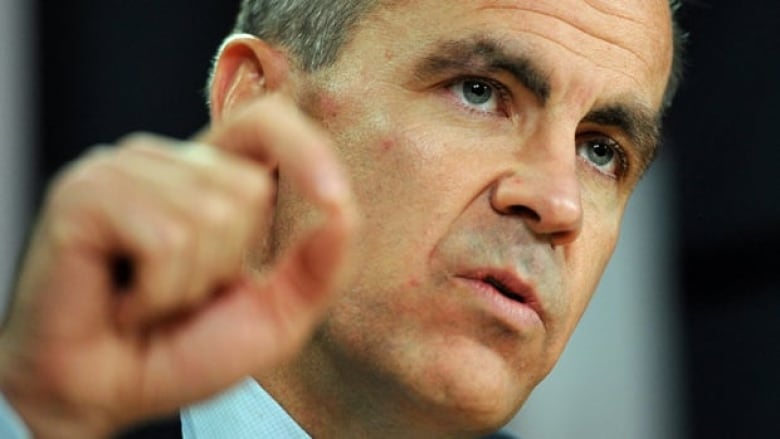Bank of Canada to continue inflation targeting

The Bank of Canada isn't done trying to find a better way of managing monetary policy, but no major change is likely as the central bank tries to keep flexible in a volatile global economy.
Both the bank and the federal government have been looking into whether tightly targeting inflation at two per cent is the best way to "enhance the well-being of Canadians (through) sustained economic growth."
But after five years of hard thinking, seminars, research papers, focus group experiments and forums, the two sides announced Tuesday that the bank will continue to conduct monetary policy pretty much like it's been done since 1991.
Left on the planning board were such options as lowering the inflation target to one per cent, or adopting a novel price-level targeting approach that "makes up" for inflationary spikes.
Targeting in place since 1991
But in the end, the financial crisis that began in mid-2008 and continues to threaten the world with another recession after triggering the worse downturn in six decades made any changes too risky, the bank said.
"The global financial crisis has reinforced the reality that economic stability and financial stability are inextricably linked," the bank reasoned in background papers on the decision released Wednesday.
Central banks around the world see rising inflation as harmful to consumers and businesses and raise interest rates to clamp down on inflationary pressures building up in the economy.
Keeping an inflation target of two per cent — within a broad range of one to three per cent — allows the Bank of Canada the flexibility it needs to help keep the economy growing.
"A framework anchored on a solid, credible inflation target provides the flexibility for monetary policy to play an occasional role in supporting financial stability," the bank said Wednesday.
'A framework anchored on a solid, credible inflation target provides the flexibility for monetary policy' —The Bank of Canada
In other words, the bank says it already has the ability to impact financial markets by simply extending — or shortening — the time by which it seeks to bring inflation back to two per cent if a shock throws it off course.
In fact it is doing it now. With inflation running at 3.2 per cent, the bank appears in no hurry to bring inflation to heel quickly because to do anything now, like raising interest rates, risks damaging an already fragile economy.
It has for months set a longer than traditional 18-24 month target of the end of 2013 for getting back to two per cent, but there's nothing unusual about that, the bank said. It's done it in the past, with timelines ranging from six months to 32 months.
Overall, the bank says the current approach "has now demonstrated its worth through both tranquil and troubled times," having kept inflation running at about two per cent for almost two decades.
Mandate to be renewed
Not that bank governor Mark Carney and his policy deputies are through researching options, however. The bank is looking at the next mandate renewal date, in 2016, to see whether it should change its target and this time it will have the experience of how countries fared under the crisis to look at.
Economist Hendrix Vachon of Desjardins Capital Markets said he would not be surprised if the Bank of Canada moved to a different regime when it comes times to sign the next five-year mandate.
He said the central bank has done a lot of work on price-level targeting (PLT) — which would require the bank to "make up" for a period of high inflation with a corresponding low inflation period so as to even out inflation over time — and would be loathe to abandon it easily.
"It was just not a good moment to change the policy," he said. "It might be better to implement that kind of change when conditions are more stable."
In its background papers, the bank itself suggested PLT is superior in preserving the value of the currency since the current system allows a spike in inflation to stand uncorrected.
However, the bank admitted PLT is difficult to explain and said it didn't want to jeopardize its credibility as an institution capable of controlling inflation in the current environment.
"This assessment could change in the future, however," it added.
Less promising, at this point, is lowering the target, which would better maintain the value of the loonie.
However, the recent crisis forced the bank into the uncomfortable position of having to drive its policy interest rate to the so-called "zero lower bound" of 0.25 per cent, reducing its flexibility to respond to shocks because it can't reduce rates further.
The bank said targeting inflation at one per cent would increase the incidents in which the bank would need to return to a barely visible policy rate.
Vachon said bank officials will use the next few years as real-life experiment to better assess not only how effective the current policy is in times of crisis, but also whether a new regime might work better.